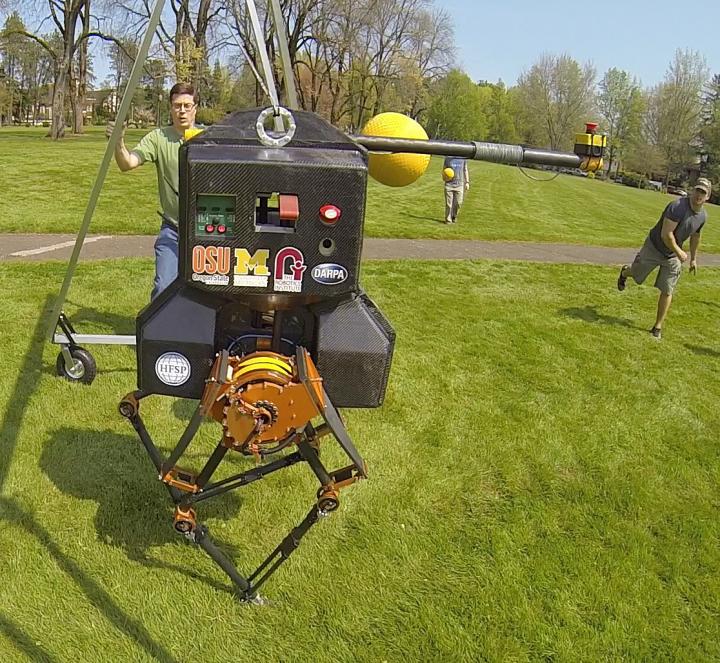Will robots become much smarter than humans? Will robots take our jobs? Will robots take over the world? These are all very popular questions in the robotics community.
While we can’t be sure about those speculations, one thing is for sure: robots are capable of walking around like humans.
A study by engineers at Oregon State University suggests that they have achieved the most realistic robotic implementation of human-walking dynamics ever created, meaning human-like versatility and performance is very possible.
The system is based on “spring-mass” technology, a type of walking that was merely a theory less than 10 years ago and combines passive dynamics of a mechanical system with computer control. It provides the ability to blindly react to rough terrain, maintain balance, retain an efficiency of motion and walk like humans do.

The technology developed by the researchers has evolved from intense studies of both human and animal walking and running, to learn how animals achieve a fluidity of motion with a high degree of energy efficiency. Animals combine a sensory input from nerves, vision, muscles and tendons to create locomotion that researchers have now translated into a working robotic system.
The OSU researchers have conducted studies with their ATRIAS robot model, incorporating the spring-mass theory, which have proved that it is three times more energy-efficient than any other human-sized bipedal robot when it employs this type of walking.
ATRIAS, is a human-sized robot created at OSU that has six electric motors powered by a lithium polymer battery about the size of a half-gallon of milk, which is substantially smaller than the power packs of some other mobile robots. It can take impacts and retain its balance and even walk over rough and bumpy terrain.
“I’m confident that this is the future of legged robotic locomotion,” said Jonathan Hurst, an OSU professor of mechanical engineering and director of the Dynamic Robotics Laboratory in the OSU College of Engineering.
Robots that can walk and run like humans opens the door to entire new industries, jobs and mechanized systems that do not yet exist.
According to Hurst, the technology displays what the future holds.When the method is further tweaked and perfected, walking and running robots could even work in the armed forces or as fire fighters.
“Robots are already used for gait training, and we see the first commercial exoskeletons on the market,” said Daniel Renjewski, the lead author on the study with the Technische Universitat Munchen. “However, only now do we have an idea how human-like walking works in a robot. This enables us to build an entirely new class of wearable robots and prostheses that could allow the user to regain a natural walking gait.”
According to Hurst and the team, it will be some time before legged robots are truly integrated into our daily lives, but now researchers know it is possible. He even speculates legged robots could become as big as the automotive industry.
The robots being constructed at OSU were designed to mimic this “spring-legged” action of bipedal animals. With minor variations, muscles, tendons and bones form a structure that exhibits most of the required behavior, and conscious control just nudges things a little to keep it going in the right direction. The effort is smooth and elastic, and once understood, can be simulated in walking robots by springs and other technology.
The findings on spring-mass walking have been reported for the first time in IEEE Transactions on Robotics.


Comments are closed, but trackbacks and pingbacks are open.